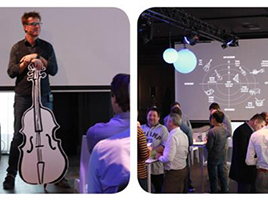

Managing complexity, aligning IT with the business, and enabling agility are top priorities for CIOs who must deliver on software development projects. So, how can software applications be managed more efficiently? Introducing Integrated Application Lifecycle Management (ALM) within your organization helps you plan, manage, and execute the long-term maintenance of a software solution – from both a business and IT perspective. It helps companies manage resources spent on an application efficiently, by addressing the challenges.
FOUR KEY CHALLENGES OF APPLICATION MANAGEMENT
Management issues that are commonly faced across most international organization projects include;
- Lack of visibility into project status
- Ineffective team communication across functions and borders
- Balancing business demands with project risk
- Unpredictable delivery times and quality assurance
Addressing these challenges requires special integrated management principles that promote attention to detail, good visibility, effective communication, and business demands that are balanced with project risks. Integrated ALM is the solution.
THE LIFECYCLE OF AN APPLICATION & THE ELEMENTS OF ALM
An application’s lifecycle is the entire time during which an organization spends money developing, governing, and maintaining a given computer program. Integrated ALM helps companies manage resources spent on developing and managing an application more efficiently, because all the tools and stakeholders are synchronized. Everyone knows who, what, when, where, and why changes were made ‒ resulting in increased integration between IT and the business.
HOW CAN YOU SOLVE THE KEY CHALLENGES?
Integrated ALM proactively manages the elements that typically disrupt processes. It transforms customized software into a standardized solution, offering a framework for significant business benefits.
Better collaboration
Increased collaboration between business and IT means better alignment of business and IT.
Shared best practices and process learning results in shorter development cycles and increased productivity.
Increased efficiency
Through improved project management, there’s less scope creep. Strengthened integration means that the IT department increases its ability to build and adapt applications that support dynamically changing business requirements, rapidly.
Improved quality and decision-making
Quality improvements mean that the final application meets the service-quality requirements of your customers. Increased accountability enables stricter compliance with governance initiatives.















